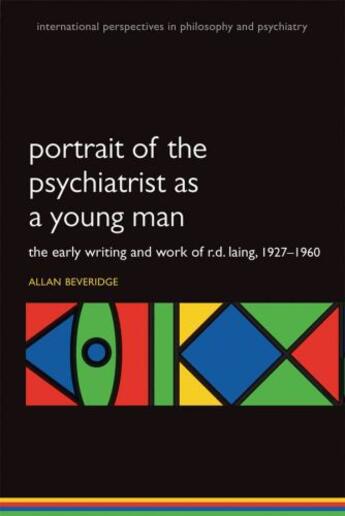Des idées de lecture pour ce début d'année !
Passionné(e) de lecture ? Inscrivez-vous
gratuitement ou connectez-vous pour rejoindre la
communauté et bénéficier de toutes les fonctionnalités du site !

RD Laing remains one of the most famous psychiatrists of the last 50 years. In the 1960s he enjoyed enormous popularity and received much publicity for his controversial views challenging the psychiatric orthodoxy. He championed the rights of the patient, and challenged the often inhumane methods of treating the mentally ill.
Based on a wealth of previously unexamined archives relating to his private papers and clinical notes, Portrait of the Psychiatrist as a Young Man sheds new light on RD Laing, and in particular his early formative years - a crucial but largely overlooked period in his life. The first half of the book considers Laing's intellectual journey through the world of ideas and his development as a psychiatric theorist. An analysis of his notebooks and personal library reveals Laing's engagement not only with psychiatric theory, but also with a wide range of other disciplines, such as philosophy, literature, and religion. This part of the book considers how this shaped Laing's writing about madness and his evolution as a clinician. The second half draws on a rich and completely unexplored collection of Laing's clinical notes, which detail his encounters with patients in his early years as a psychiatrist, firstly in the British Army, subsequently in the psychiatric hospitals of Glasgow, and finally in the Tavistock Clinic in London. These notes reveal what Laing was actually doing in clinical practice, and how theory interacted with therapy. The majority of patients who were to appear in Laing's first two books, The Divided Self and The Self and Others have been identified from these records, and this volume provides a fascinating account of how the published case histories compare to the original notes.
There is a considerable mythology surrounding Laing, partly created by himself and partly by subsequent commentators. By a careful examination of primary sources, Allan Beveridge, both a psychiatrist and an historian, examines the many mythological narratives about Laing and provide a critical but not unsympathetic account of this colourful and contradictory thinker, who addressed questions about the nature of madness which are still being asked today.
This book will be of interest to mental health workers and social historians alike as well as anybody interested in the philosophy of psychiatry.
Il n'y a pas encore de discussion sur ce livre
Soyez le premier à en lancer une !

Des idées de lecture pour ce début d'année !

Si certaines sont impressionnantes et effrayantes, d'autres sont drôles et rassurantes !

A gagner : la BD jeunesse adaptée du classique de Mary Shelley !

Caraïbes, 1492. "Ce sont ceux qui ont posé le pied sur ces terres qui ont amené la barbarie, la torture, la cruauté, la destruction des lieux, la mort..."